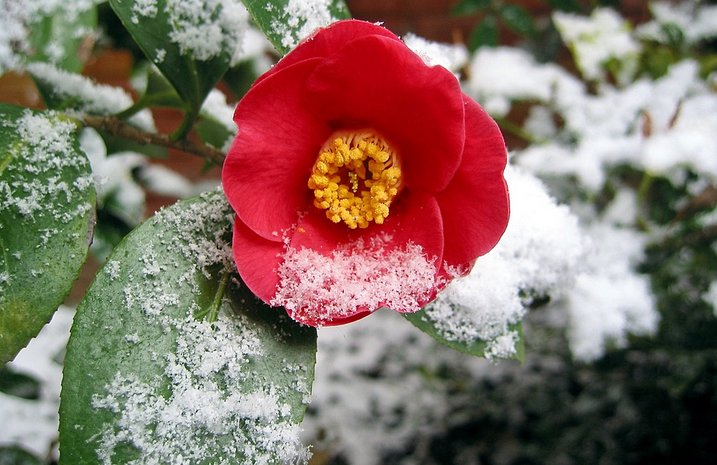A garden can still be a wonderland during winter. Cold weather gardening is just as interesting as grounds keeping in spring when one knows which plants will boost the colors in the yard. There are many low-maintenance adaptive plants that will bring color to your garden when you need it most.
In places that don’t frequently have frosts, pansies can brighten up a cold dreary winter day. These old fashioned violets grow well in partially sunny conditions and in harsh winter. Since they are cold-tolerant, they are often planted in the fall so they can bloom over the winter. Its popularity spreads all over Europe because of its place in arts and culture when William Shakespeare used its juices as a love potion.
Camellias are native in the colder parts of Asia, from Japan to the Himalayas. It is also the tea flower in China because the leaves are used for tea. The dense leaves are thick and glossy which make it ideal in a long cold haul. These plants prefer partial shade and can’t tolerate drought conditions. Cold varieties of the camellia are Ashton’s Pride, Frost Prince and Snow Flurry. These flowering plants are best positioned out of wind direction.
Pieris Japonica or Lily of the Valley Bush is a year round container plant that bloom in clusters of small white flowers that start in November. They also grow in wild and thick in the cold mountains in China, Taiwan and Japan and are popularly cultivated by hobbyists. They start off as bright red buds and they turn off-white as the blooms mature.
The witch hazel is occasionally called winterbloom by North Americans for its ability to survive in a harsh cold environment. These shrubs grow up to 3-8 meters tall with alternately arranged broad leaves. It blooms while its fruit from the previous year is still maturing. The fruits are one-centimeter capsules that explode in autumn to let out black seeds to re-propagate. The flowers are magnificent four-slender petals range from dark yellow, orange to red. It begins to bloom in autumn and will continue to expand throughout winter. On an interesting side note, the witch hazel got its name from England, when its twigs were used as divining rods in the olden times.





